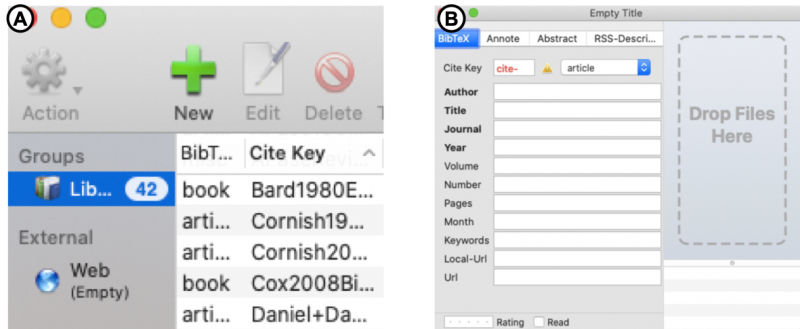
I personally use keys that mirror a traditional author-year citation style, e.g. This rule protects you from accidentally duplicating a reference in the Bibtex file and referring to it under two different keys. Ideally, you should be able to guess the key from looking at the reference. This conversion can be switched off by enclosing the words not to be converted into an extra pair of braces, like so: title = command in your Latex file.) Most importantly, it is a good idea to have a systematic approach to choosing keys. For example, the title “A review of HIV biology” will be typeset as “A review of hiv biology”. This convention has the unfortunate side effect that proper nouns or acronyms, which should be capitalized, will be converted into lower-case as well. Bibtex enforces this capitalization rule by automatically converting everything in the article title field to lower-case. In a nutshell, this means that all words except the first one, proper nouns, and acronyms are spelled in lower case (see e.g. 1 The following sections address some of the most common issues that I see in daily Bibtex use.Īrticle titles in a reference list should be capitalized in sentence case. All bibliography managers that automatically generate Bibtex entries mess things up.Ī corollary of the second law is that all Bibtex entries need to be hand-curated to work correctly.My guidelines are shaped by the following two insights, which I call the first and second law of Bibtex: (This document is well worth the read for anybody using bibtex with some regularity.) To help ordinary mortals succeed with using Bibtex, I’m providing here a set of best practices and useful guidelines that help you steer clear of the worst pitfalls of Bibtex. In fact, the most complete description of bibtex’s inner workings is aptly called Tame the BeaST. It uses an awkward database format for storing bibliographic entries and an atrocious, poorly-documented programming language for describing how bibliographic entries should be formatted. Bibtex is an archaic program, written 30 years ago by a graduate student and never substantively changed or updated since. I have also rarely met anybody who could use it without messing up their bibliography in some way. I have used it for 20 years, I have written over 100 papers with it, and I think it works really well. You may now click on View Last Imported Folder to view your records and move them to the folder of your choice.Bibtex is the reference manager for Latex. Paste copied information into the provided text box.

Select Bibdesk (BibteX format) in the Database drop-down menu.ĥ. Select BibTeX in the Import Filter/Data Source drop-down menu.Ĥ. Click References then click Import at the top of the screen.ģ. Copy the BibTex-encoded text that is generatedġ. Paste your selection into the text box.ħ. Separate each reference with two carriage returns/spaces.ģ.

Only minimal data can reliably be imported, so check your imported records.Ģ. Note: This procedures works best with complete references, such as would be formatted in the APA style. One work-around is to convert the bibliography into BibTex, then import the BibTeX file into RefWorks. Pre-existing bibliographies in word processing documents generally do not have field labels that permit importing into RefWorks. WNC4 is fully grayed out and you cannot log in.
OVRLEAF BIBDESK PC

OVRLEAF BIBDESK MAC
Mac -Finding and deleting PLIST -Write-n-cite.“Length is null or not an object” message when using Write-n-cite.

OVRLEAF BIBDESK SOFTWARE


 0 kommentar(er)
0 kommentar(er)
